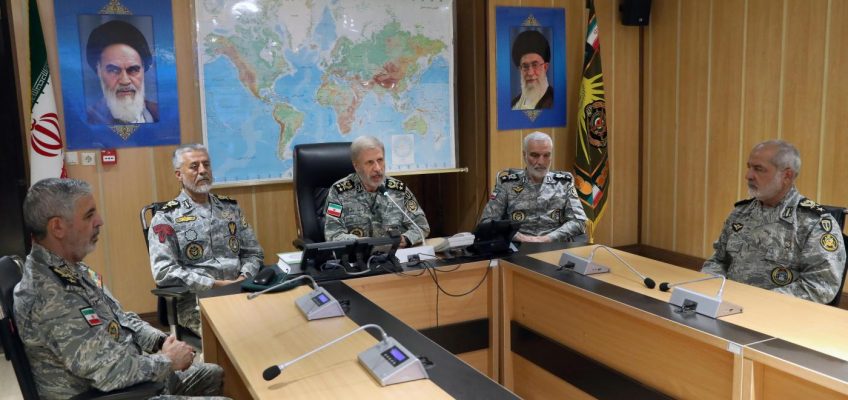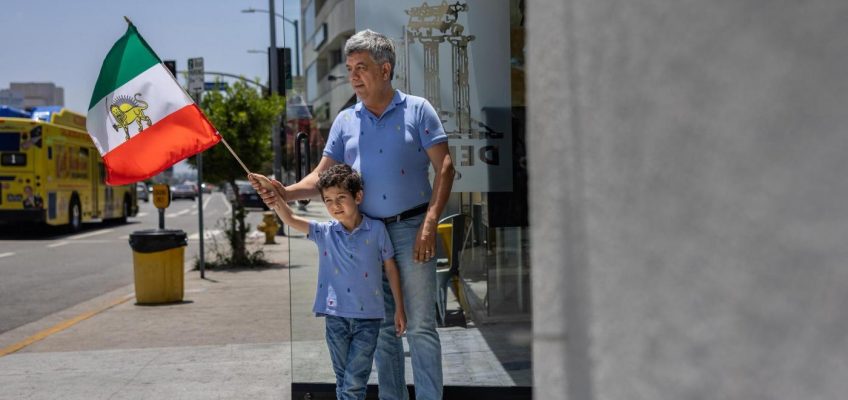DUBAI, United Arab Emirates — Israel hit Iranian government targets in Tehran on Monday in a series of strikes that followed a salvo of missiles and drones fired by Iran at Israel in the wake of the Trump administration’s massive strikes on Iranian nuclear sites the day before.
The Israeli military also confirmed it struck roads around Iran’s Fordo enrichment facility to obstruct access to the site. The underground site was one of those hit in Sunday’s attack by the United States on three nuclear facilities. The Israeli military did not elaborate.
In Tehran attacks, Israel’s Defense Ministry said it hit targets that included the notorious Evin Prison in the Iranian capital and the security headquarters of the paramilitary Revolutionary Guards.
“The Iranian dictator will be punished with full force for attacking the Israeli home front,” the ministry said.
The strikes also hit Tehran’s Palestine Square and other “military command centers belonging to the Iranian regime,” it said.
According to an Israeli official familiar with the government’s strategy, Israel is targeting these sites to put pressure on the Iranian administration but is not actively seeking to topple it. The official spoke on condition of anonymity to discuss internal government deliberations.
The Israeli move came just hours after President Donald Trump wrote on his Truth Social website: “If the current Iranian Regime is unable to MAKE IRAN GREAT AGAIN, why wouldn’t there be a Regime change???”
Nuclear fears mount after US strikes
In Vienna, the head of the United Nations nuclear watchdog said he expected there to be heavy damage at the Fordo facility already following the Sunday’s U.S. airstrike there with sophisticated bunker-buster bombs.
“Given the explosive payload utilized … very significant damage … is expected to have occurred,” said Rafael Grossi, the head of the International Atomic Energy Agency.
With the strikes on Sunday on Iranian nuclear sites, the United States inserted itself into Israel’s war, prompting fears of a wider regional conflict. Iran said the U.S. had crossed “a very big red line” with its risky gambit to strike the three sites with missiles and 30,000-pound bunker-buster bombs.
Several Iranian officials, including Atomic Energy Organization of Iran spokesman Behrouz Kamalvandi, have claimed Iran removed nuclear material from targeted sites ahead of time.
Grossi told the IAEA board of governors on Monday that Iranian Foreign Minister Abbas Araghchi had informed him on June 13 that Iran would “adopt special measures to protect nuclear equipment and materials.”
“I indicated that any transfer of nuclear material from a safeguarded facility to another location in Iran must be declared,” Grossi said, without saying whether Iran had responded.
Israel and Iran press their attacks
Iran described its Monday attack on Israel as as a new wave of its Operation “True Promise 3,” saying it was targeting the Israeli cities of Haifa and Tel Aviv, according to Iranian state television.
Explosions were also heard in Jerusalem. There were no immediate reports of damage.
In Iran, witnesses reported Israeli airstrikes hit areas around Iran’s capital, Tehran, around midday. Iranian state television confirmed one Israeli strike hit the gate of Evin Prison.
The report shared what appeared to be black-and-white-surveillance footage of the strike. The prison is known for holding dual nationals and Westerners often used by Iran as bargaining chips in negotiations with the West.
Evin also has specialized units for political prisoners and those with Western ties, run by the paramilitary Revolutionary Guard, which answers only to Supreme Leader Ayatollah Ali Khamenei. The facility is the target of both U.S. and European Union sanctions.
Earlier Monday, Iranian Gen. Abdolrahim Mousavi, the chief of joint staff of armed forces, warned Washington its strikes had given Iranian forces a “free hand “ to “act against U.S. interests and its army.”
Tens of thousands of American troops are based in the Middle East, many in locations within range of short-range Iranian missiles.
Calls for de-escalation
The U.S. described its Sunday attack on the Fordo and Natanz enrichment facilities, as well as the Isfahan nuclear sit, as a one-off to take out Iran’s nuclear program, but Trump has warned of additional strikes if Tehran retaliates.
Mousavi described the American attacks as violating Iran’s sovereignty and being tantamount to invading the country, the state-run IRNA news agency reported.
Russia is one of Iran’s closest allies and on Monday, President Vladimir Putin said after meeting in Moscow with Araghchi, the Iranian foreign minister, that they had explored “how we can get out of today’s situation.”
Putin called the Israeli and American attacks on Iran an “absolutely unprovoked aggression.”
Elsewhere, calls continued for de-escalation and the return to diplomacy to try and resolve the conflict.
Iran, which insists its nuclear program is for civilian purposes only, previously agreed to limit its uranium enrichment and allow international inspectors access to its nuclear sites under a 2015 deal with the U.S., France, China, Russia, Britain and Germany in exchange for sanctions relief.
But after Trump pulled the U.S. unilaterally out of the deal during his first term, Iran began enriching uranium up to 60% — a short, technical step away from weapons-grade levels of 90% — and restricting access to its nuclear facilities.
In Brussels, the European Union’s top diplomat said the bloc remained “very much focused on the diplomatic solution.”
“The concerns of retaliation and this war escalating are huge,” Kaja Kallas said at the start of a foreign ministers’ meeting in Brussels where Iran has jumped to the top of the agenda.
“Especially closing of the Strait of Hormuz by Iran is something that would be extremely dangerous and not good for anybody,” Kallas said, referring to a maritime route crucial for oil transport.
After Sunday’s attacks, Iranian officials repeated their longtime threats of possibly closing the key shipping lane.
___
Lidman reported from Tel Aviv, Israel. Associated Press writers Josef Federman in Jerusalem, Elise Morton in London, Geir Moulson in Berlin, Ella Joyner in Brussels and Stephanie Liechtenstein in Vienna contributed to this report.
Related Articles
Today in History: June 23, Title IX signed into law
L.A.’s Iranian community grapples with reactions to U.S. military attack
US issues ‘worldwide caution’ for Americans after attack on Iran
China rips Trump’s Iran attack in first comment since US hit
As Allies Call for Diplomacy, Trump Posts About Regime Change in Iran




